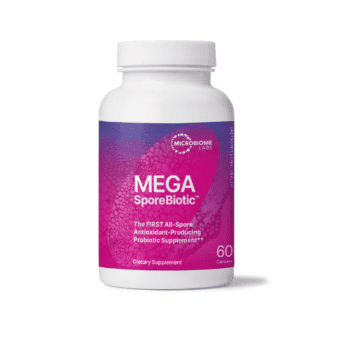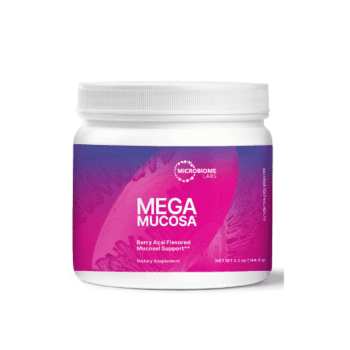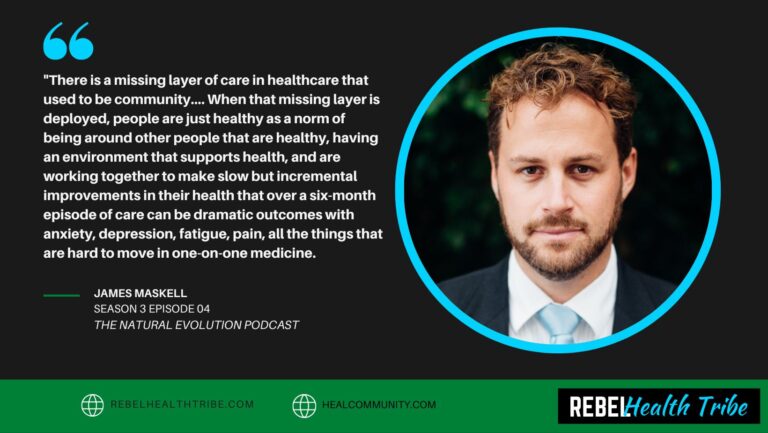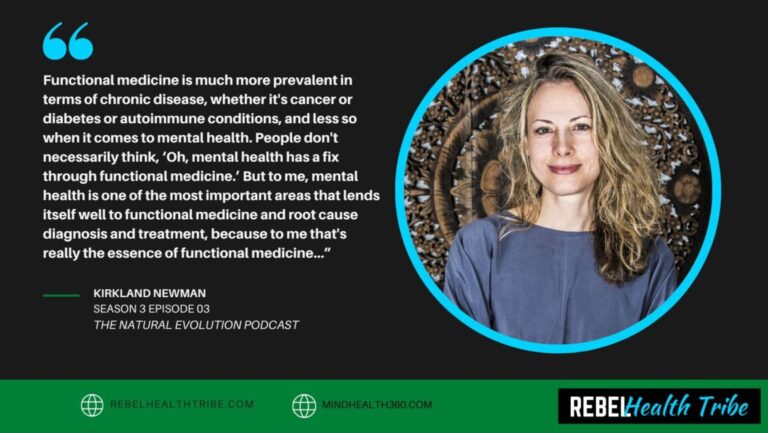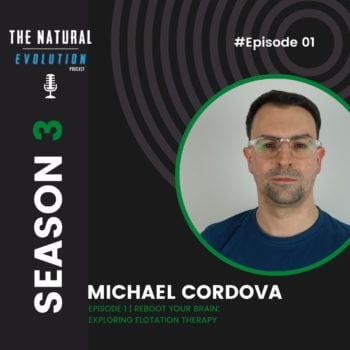

More Posts from
AutoImmune & Chronic Disease

Genetics and Hormone Production, Transport, Utilization, and Metabolism
Our genetics play a larger role in our hormones than

Genetics & Neurotransmitters: Impact on Your Mood, Energy, Hormones, and More!
Have you wondered why an antidepressant didn’t work for you?

Genetics and Detoxification: Your genes are key to knowing what detox protocol will best suit your body.
https://vimeo.com/821487331 If you’ve ever bought a detox kit off
Foam rollers. You’ve probably seen them around and know them as little torture cylinders. They are now as ubiquitous in gyms as ab roller machines and given their crazy popularity – I bet it’s only a matter of time before we’ll start seeing foam rollers for dogs.
Myofascial stretching and self-release have become a huge part of the health and fitness industry. I see people coming into the gym to warm up and they go right for the rollers. The pick one up, throw it down and then grind their body all over it like a bad teenage date. They wince and sigh and grit their teeth as the roller pulverizes their IT bands etc. No pain, no gain right?
And I’ve gotta be transparent about this… I used to use foam rollers on myself and my clients. I thought that because it hurt and then felt good afterward, I was doing something that was helping.
But now I’m not so sure.
After learning about fascia (albeit at a relatively introductory level) from skilled therapists like Dan Hellman and Guy Voyer, I’ve got a completely new understanding of this tissue and how it works. The purpose of this article is to provide a new cautionary perspective on foam rolling, because there hasn’t been any major research into whether this is actually beneficial long term.
Yes, there are some studies that have come out in the last few years that have found some transient benefits – but they all admit that the jury’s still out on whether it provides any long-term benefits or does no lasting harm. The more I understood the function of fascia and the more I learned about its composition, the easier it became for me to question the endless anecdotal benefits that people have been experiencing using foam rollers.
Let’s start by talking about fascia. What is it, and what does it do?
Fascia is simply the skin of all human body parts – whether it’s an organ or a muscle. Fascia covers everything from the heart (pericardium), to the tendons and ligaments (aponeurosis), to our muscles (epimysium). Even though those are different names and different parts – they are all still fascia and have only small differences in the spacing of their fibrils (basic structural material).
Fascia has many different components to it, but it’s mainly water – about 70%. Which is an issue when you think about applying considerable mechanical pressure to it with a foam roller. The tissue that’s underneath the roller is having all the water squeezed out of it like a tube of toothpaste. On top of that, if a person isn’t adequately hydrated, the fascia will be resistant to being forcibly compressed and stretched.
If you’ve ever made a homemade pie crust that was too dry, you figured that out because it crumbled and broke apart when you tried to use your rolling pin on it. Now I’m not saying that fascia and pie crust are totally equivalent, but the point remains the same – dry tissue that’s supposed to be mostly wet likely won’t respond well to being forcibly lengthened through high amounts of lateral pressure.
So can’t I just make sure I’m hydrated before I roll? While being hydrated is always a good thing, it’s not enough.
Foam rolling can cause a process called DAMPS, which stands for damage associated molecular pattern, and it simply means that when tissues experience trauma, there’s an inflammatory response that takes place and it can be self-perpetuating.
Normally when you think about the immune response, it’s related to a pathogen or a virus or some other invader – but this is a non-pathogenic immune response, and if you’re foam rolling ALL THE TIME like most people do, you’re potentially contributing additional inflammatory insults to your body. On the regular.
And here’s the problem. Foam rollers DO create short-term increases in joint ranges of motion and reduce muscle tension. I’ve experienced it personally and it’s in the scientific literature. But the studies have never looked at the long-term consequences, and they sure as fascia haven’t looked at DAMPS and its potential impact on the body.
So we fall into the potential trap of ‘well after I roll out I feel better, so DAMPS SCHMAMPS’. I believe it’s better to be cautious about adding any additional inflammatory problems – we’ve got enough of that already.
Pain Sensitization
And then there’s the problem of pain sensitization. Chronic use of a foam roller can contribute to a lower pain threshold – which means that the next time you accidentally bang your hip into your kitchen table, it might be way more painful than it should be. The tissue has become sensitized due to the trauma of being flattened multiple times per week before your workouts.
So if you’re foam rolling the majority of your body and therefore sensitizing a large tissue surface area, that dramatically increases your chances of pain in general, which causes all kinds of problems.
Any skilled therapist will tell you that when the body is in pain, it will somehow compensate to avoid it. I’m sure you can remember a time when you’ve hurt your leg and had difficulty walking. Your body wouldn’t allow normal movement due to the pain – so other muscles/joints had to bear the burden of the extra work while the body worked on healing the injured part. If the compensation lasts for an extended period of time, the nervous system simply adapts, and the compensation is then deemed normal movement.
Let’s not forget about those other muscles and joints that had to pick up the slack. Now they are permanently stuck doing their job along with the job of the muscles they were supporting during the injury. Imagine having a co-worker call in sick for a while and being told you must do their job plus all your own work – and there’s no choice.
It’s a recipe for disaster.
Proprioception
Fascia is also proprioceptive, which means it has awareness. Proprioception is like your sixth sense – it allows you to know where your limbs are relative to your body and how much force and control is required for a movement.
Fascia interprets the information given to them by the nervous system and then basically tells the muscle how to respond. Muscle spindle cells which are the main proprioceptive cell that affects our muscles are not even in the muscle itself – they are in the fascia.
That’s a very important piece of information.
If we are traumatizing the fascia, how effective can a muscle be?
Let’s put it this way, I wouldn’t want my orthopedic surgeon foam rolling their upper body before my vasectomy. Controlling that scalpel requires tremendous proprioceptive control, and I’d rather not end up like Theon Greyjoy from Game of Thrones.
In my opinion, the next phase of study with myofascial ‘self-release’ using foam rolling should examine the levels of local inflammation (short and long term) as well as the proprioception of muscles that are regularly foam rolled. Is there an increase in awareness, or a decrease? How much inflammation occurs, and how long does it remain? Does it continue even after foam rolling has been done.
These are the kinds of questions that need answering, not focusing on the superficial facts like ‘oh my quads work better after I foam roll, so it must be benefitting me’.
Because if we are to understand fascia as intelligent tissue that is involved in so many aspects of how our bodies move and interact with the world, then it doesn’t really make much sense to indiscriminately apply large amounts of pressure to such important tissue.
Somehow… maybe it’s magic or something, but foam rollers seem to grant ‘fascial knowledge’ to whomever rolls upon them. It’s weird.
Fitness professionals unfortunately have the ability to take incredibly complex subjects (like fascial anatomy) and reduce them to a basic form that can be easily passed on from person to person without any real knowledge or understanding. And I get it.
This also applies to me – I love being the guy who people come to because I know stuff. My ego loves it. But I’ve learned that if I’m trying to provide a person with value, then the information I’m giving them had better be beneficial to them and not about how smart I think I am.
‘Ok, so now I’m not going to roll anymore – what the foam do I do about my fascia instead?’
You have basically three choices:
1. See a professional who manually treats your tissue without traumatic tools or techniques.
2. Learn about these techniques by taking a proper myofascial stretching class (or taking the courses themselves).
3. Do nothing.
I would vote for the second one, but you’re likely an adult who can make up their own mind.
ELDOA Method
So just what is a proper myofascial stretching class? It’s called the ELDOA Method and it’s a special series of movements and stretches designed to pump the body and actually create space at specific vertebrae in the spine (depending on the stretch).
The creation of space between the vertebrae helps the spine feel relief from the constant weight of gravity, and when the spine is happier, so too are your organs and glands.
What makes the ELDOA Method so powerful is that because you are the one who is changing the shape and length of the fascia, your body is learning from the experience. When you have someone else stretch your fascia for you, your body doesn’t learn anything because the proprioceptive system isn’t stimulated. But when you do it yourself, your fascia learns and responds.
I’d like to end here with a little poem:
Hey fascia you’re so fine, you’re so fine, you blow my galea aponeurotica
Hey fascia! Hey fascia!
Ok, I’ll admit it doesn’t really roll off the tongue, but it does accurately describe how I feel.
Until next time – be kind to your fascia…
And of course, always ask your surgeon if they regularly foam roll! (And maybe your dentist too)
FEATURED PRODUCTS
-
MegaSporeBiotic
$59.99 – $176.95MegaSporeBiotic™ is a 100% spore-based, broad-spectrum probiotic shown to be...
-
MegaSporeBiotic For Kids Gummies
$39.00MegaSporeBiotic™ Gummies are a 100% spore-based proprietary probiotic blend that...
-
MegaMucosa
$59.99MegaMucosa is the first complete mucosal support supplement of its...
-
MegaPre Prebiotics Powder
$59.99MegaPreBiotic™ is the first Precision Prebiotic™ supplement made up of...
Get Social
Recent Podcasts
Recent Courses
Autoimmune Masterclass 2024
Autoimmune Masterclass brings together 17 of the world’s
Toxicity & Detoxification Masterclass
The toxicity and Detoxification Masterclass covers a wide

5-Week Functional Neurology w/ Dr. Jared Seigler
Learn how to improve your brain health and
Brain & Nervous System Masterclass
16 Leading Experts Share Cutting-Edge Science, Effective Practices,
Get the RHT Newsletter
Be the first to get access to special offers, new podcasts, courses, products and events from Rebel Health Tribe.
Facebook
Twitter
Pinterest
LinkedIn
Reddit
WhatsApp
Telegram
StumbleUpon
-
MegaSporeBiotic
$59.99 – $176.95MegaSporeBiotic™ is a 100% spore-based, broad-spectrum probiotic shown...
-
MegaSporeBiotic For Kids Gummies
$39.00MegaSporeBiotic™ Gummies are a 100% spore-based proprietary probiotic...
-
MegaMucosa
$59.99MegaMucosa is the first complete mucosal support supplement...
-
MegaPre Prebiotics Powder
$59.99MegaPreBiotic™ is the first Precision Prebiotic™ supplement made...
Autoimmune Masterclass 2024
Autoimmune Masterclass brings together 17 of the world’s leading doctors, researchers, and experts on autoimmune diseases who each present their
Toxicity & Detoxification Masterclass
The toxicity and Detoxification Masterclass covers a wide array of topics with the following guests: 1. Lara Adler, Environmental Toxins

5-Week Functional Neurology w/ Dr. Jared Seigler
Learn how to improve your brain health and function with this Functional Neurology course from Dr. Jared Seigler.
Dr. Seigler
Paul Jackson
I teach and work with people to help them overcome their body shape challenges. As a formerly obese person who struggled, I love the feeling I get when my clients create their own breakthroughs and rewrite their own health story.
View All Author Posts




